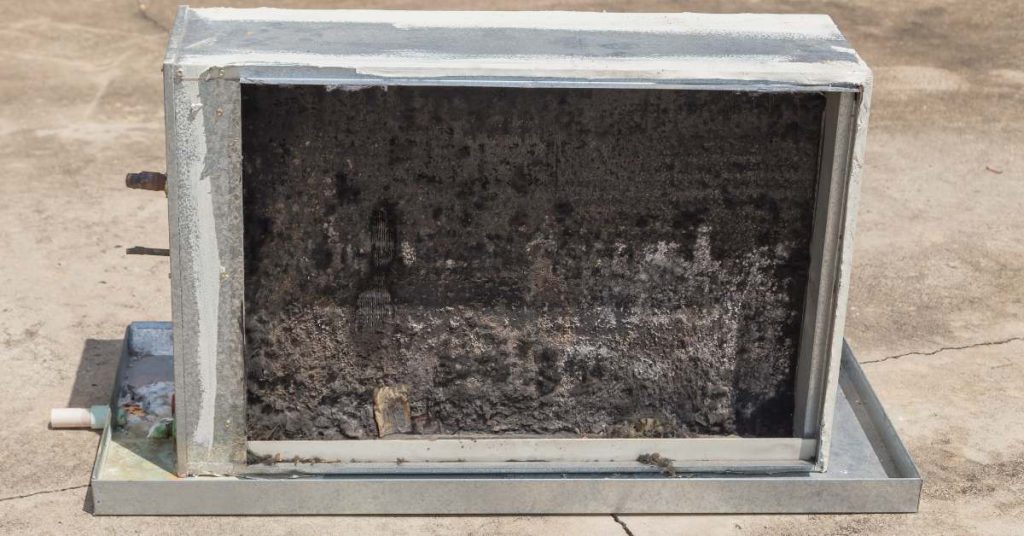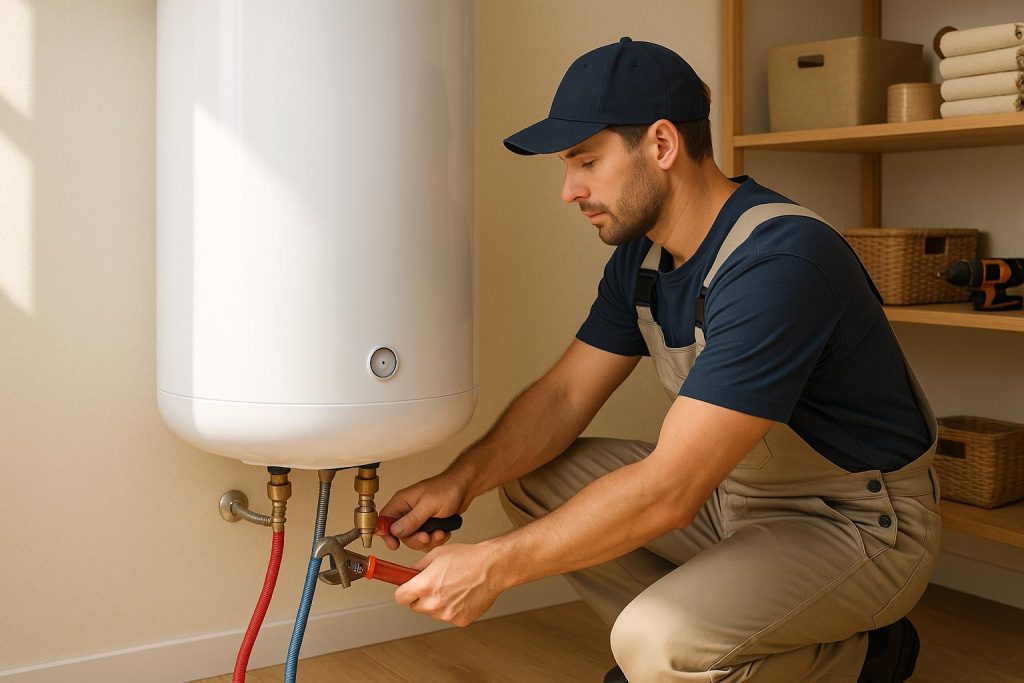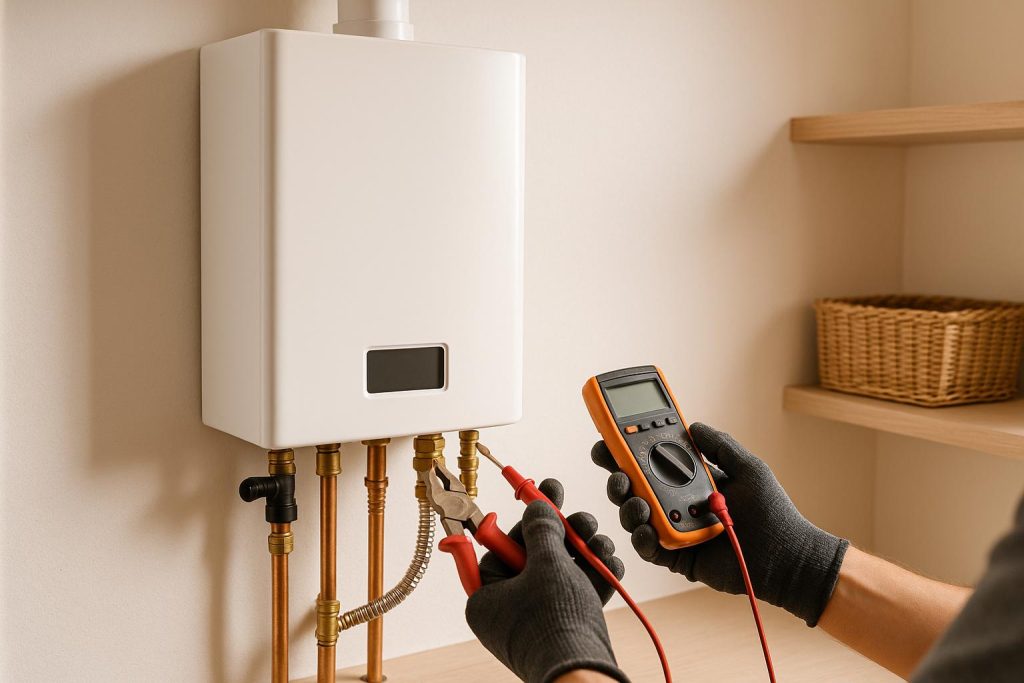
The evaporator coil is a crucial component of an air conditioning system responsible for cooling the air. When it malfunctions, it can lead to various signs and symptoms that indicate a problem. Here’s a summary of the signs and symptoms of a bad AC evaporator coil:
- Warm Air: One of the most common signs is the AC blowing warm or room-temperature air instead of cool, conditioned air.
- Inadequate Cooling: Even when the AC is running continuously, the indoor temperature doesn’t reach the desired setpoint, indicating reduced cooling capacity.
- Poor Airflow: Reduced airflow from the vents can be a symptom, as a clogged or malfunctioning evaporator coil may obstruct the passage of air.
- Ice Formation: If you notice ice forming on the indoor unit or refrigerant lines, it may indicate an issue with the evaporator coil, such as a refrigerant leak.
- Strange Sounds: Hissing or bubbling noises coming from the indoor unit can be a sign of a refrigerant leak or pressure problem related to the evaporator coil.
- High Energy Bills: A malfunctioning evaporator coil can force the AC to work harder to cool your home, leading to increased energy consumption and higher utility bills.
- Water Leaks: A malfunctioning coil can cause condensation to accumulate, leading to water leaks or drips from the indoor unit.
- Mold or Mildew Odors: Reduced cooling efficiency can result in moisture buildup on the coil, fostering mold and mildew growth and emitting unpleasant odors.
- Frequent Repairs: If you find yourself frequently repairing other AC components like the compressor or condenser, it may be due to an underlying issue with the evaporator coil.
- Decreased Air Quality: A malfunctioning evaporator coil can affect indoor air quality by not effectively removing humidity and contaminants from the air.
How an AC Evaporator Coil Works
Air conditioners (apart from portable units) have an indoor and outdoor unit. The outdoor unit houses the condenser coil and the compressor while the indoor unit is the evaporator coil.
The 2 units are joined together using copper tubes and a refrigerant is then circulated between them. Refrigerants flow from the evaporator coil to the compressor and then to the condenser coil before flowing back to the evaporator coil through an expansion valve.
The refrigerant absorbs heat from the indoor air (while flowing through the evaporator coil) and releases it to the outside (while flowing through the condenser coil).
Evaporator coils unit have a fan which pulls warm air from the house through the return air ducts. Before the air gets to the evaporator coil, it is first passed through an air filter where all the impurities are removed.
The cleaned air is then forced across the evaporator coil where a cold refrigerant would be flowing through. Due to the difference in temperature, the refrigerant will absorb heat from the air and that is how cooling happens.
Apart from cooling the air, evaporator coils also reduce the humidity of the air. When the warm and humid air comes into contact with the cold evaporator coil, moisture in the air condenses and is drained outside.
After absorbing heat from the air, the refrigerant evaporates and flows out of the evaporator coil to the outside unit where it releases the heat to the outside before flowing back to the indoor unit.
Signs of a Bad Evaporator Coil
The following are the signs of bad evaporator coil:
1. Frozen Evaporator Coil
The moisture removed by an air conditioner (dehumidification) is supposed to be drained out through the AC drain line. However, if there is a problem with the evaporator coil or parts associated with it, the moisture will ice over the surface of the coil.
Needless to say, a frozen evaporator coil will not cool your house. Instead, there will be warm and sometimes insufficient flow of warm air coming from the vents.
A frozen evaporator coil is caused by:
Dirty Evaporator Coil

The actual evaporator coil is surrounding by fins which help to evenly distribute the flow of air. Even though the air conditioner has a filter, some dust particles will still manage to penetrate through it and clog the evaporator coil.
Clogged evaporator coil fins mean that not enough air will get to the actually evaporator coil. As a result, the refrigerant will overcool the little air and as a result instead of the condensed water dripping and draining out, it will form ice around the evaporator coil.
Clogged Air Filter
Air conditioner filters should be replaced after every 3 months. If you fail to replace your air conditioner filter, they will become clogged restricting the flow of air to the evaporator coil.
Just like with a dirty evaporator coil, the condensed moisture will keep forming ice on the evaporator coil until you end up with a block of ice surrounding the entire coil.
Faulty Fan/Blower
When the evaporator fan is faulty, it will not supply the evaporator with enough warm air from the house. As a result, the air conditioner will be unable to cool your house and you will also end up with a frozen evaporator coil.
To prevent an air conditioner evaporator from freezing, enough warm air has to get to the coil so that the refrigerant can take up the heat. If that does not happen, the refrigerant temperature will drop below freezing point and that is why evaporator coils freeze.
Clogged AC Drain Line
Air conditioners have a condensate drain line which drains the condensate from the drip pan to the outside. Due to the humid nature of the drain line, algae and mold are likely to grow and clog it, preventing it from draining the condensate.
If the drain line cannot drain water from the drip pan, the water level will keep rising and come into contact with the evaporator coil. When that happens, the evaporator coil will surely freeze.
Solution: As you can see, a frozen coil is something that can be fixed. You only need to clean the evaporator coil, fix the fan, change the air filter or unclog the AC drain line and clean it regularly.
However, a frozen evaporator coil can also be caused by a refrigerant leak. The solution for that will depend on where the leak is and how old your air conditioner is as I will explain in the point below.
2. Leaking Refrigerant
Refrigerants leaks are very hard to detect since they have no smell unless it is leaking out first when you would then detect a slightly sweet smell. Refrigerants can also smell like paint thinner or nail polish.
When there is a refrigerant leak in your air conditioner, it means that the refrigerant pressure inside the system will drop. A drop in pressure translates in a drop in temperature as well. As a result, the refrigerant temperature will drop below freezing point causing the evaporator coil to freeze.
The first thing you will need to do is locate the leak. That will however need the services of a professional HVAC technician.
If the leak is in the evaporator coil, you will need to decide whether to repair it or fix it. But how do you know how to go about out?
The first thing is to determine which refrigerant your air conditioner uses. If the air conditioner uses Freon (R-22), you should consider buying another air conditioning unit.
To start with, the fact that you have an air conditioner using R-22 means that the unit has surely seen better days and is likely to fail again soon. A replacement is the only long-term solution.
Secondly, Freon has been be phased out meaning that the only available supplies are way too expensive and soon enough will be impossible to find. Replacing the unit with a modern unit will be the best decision.
If however your leaking evaporator coil uses R-410A, you can repair the coil or replace it entirely if the warranty is still effective. Even if the warranty is not effective, you can opt to replace the coil if it is more than 10 years old.
3. Warm Air from the Vents
After the refrigerant absorbs heat from the indoor air, the blower forces the cooled air out of the evaporator coil unit to your living spaces through the vents. If instead there is warm air coming from the vents, it is a sign that the evaporator coil is not cooling the air.
The hard part is determining why exactly the evaporator coil is not cooling the air. For that case, you may need to call in an HVAC technician to get to the roof of the problem. From their finding they may recommend a replacement or repair.
4. Unusual Noises
Noises from air conditioners are always a sign that something is not okay. The noises can come from the condenser unit or evaporator unit.
The following are some of the noises from the evaporator units and what they mean:
- Screeching/squealing sounds – This is usually caused by a damaged evaporator blower fan motor. In could also be caused by damaged bearings in your fan motor.
- Hissing sounds – a hissing sound coming from your AC indoor unit is usually a sign that the evaporator coil is leaking the refrigerant. For you to actually here a hissing sound, it means that you are dealing with a moderate to severe leak.
And basically those are the signs of a bad air conditioner evaporator coil. It is unfortunate that most air conditioning problems are not easy to troubleshoot as a homeowner and in most cases you will need to hire an HVAC technician to troubleshoot, repair or replace.





